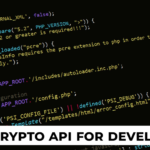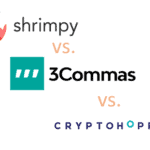Cryptocurrency mining is like digging for treasure in the digital world. Instead of using shovels and pickaxes, miners use powerful computers to solve complex mathematical puzzles. These puzzles are part of the process that verifies and records transactions on the cryptocurrency network.
Here’s how it works: when someone makes a transaction with a cryptocurrency like Bitcoin, it needs to be verified to ensure it’s valid and not fraudulent. Miners compete to be the first ones to solve the puzzle associated with that transaction. The miner who solves the puzzle gets to add the transaction to the blockchain, which is like a digital ledger that records all transactions.
In return for their efforts, miners are rewarded with newly created cryptocurrency coins. This process of verifying transactions and adding them to the blockchain is what we call cryptocurrency mining.
Think of it like a race where miners use their computers to solve puzzles, and the winner gets a reward in the form of cryptocurrency. The more powerful your computer, the better your chances of winning the race and earning rewards. However, mining requires a lot of electricity and computing power, so it’s not something just anyone can do from their home computer anymore.

Software and Hardware requirements
The software and hardware requirements for cryptocurrency mining can vary depending on the specific cryptocurrency being mined and the mining method used (e.g., proof-of-work or proof-of-stake). However, here are the general requirements for mining popular cryptocurrencies like Bitcoin:
Software Requirements
- Mining Software: You’ll need specialized mining software designed to connect your hardware to the cryptocurrency network and perform the mining process. Examples include CGMiner, BFGMiner, and NiceHash for Bitcoin mining.
- Wallet Software: A cryptocurrency wallet is necessary to store the coins you mine. Most mining software allows you to specify a wallet address where your mined coins will be sent.
Hardware Requirements
- Mining Hardware: The most critical component of cryptocurrency mining is the mining hardware. For Bitcoin and other proof-of-work cryptocurrencies, miners typically use Application-Specific Integrated Circuit (ASIC) miners, which are specially designed for mining cryptocurrencies. These miners are much more powerful and efficient than traditional computer hardware for mining purposes.
- Graphics Processing Units (GPUs): For some cryptocurrencies, such as Ethereum, mining can be done using GPUs instead of ASICs. GPUs are more versatile and can be used for other tasks like gaming or graphic design when not mining.
- Central Processing Unit (CPU): While not as efficient as ASICs or GPUs, CPUs can still be used for mining certain cryptocurrencies, particularly those with CPU-friendly mining algorithms.
- Power Supply Unit (PSU): Mining hardware consumes a significant amount of electricity, so a reliable and efficient power supply is essential to ensure stable operation.
- Cooling System: Mining hardware generates a lot of heat, so a robust cooling system, such as fans or liquid cooling, is necessary to prevent overheating and ensure optimal performance.
- Internet Connection: A stable and high-speed internet connection is required to connect your mining hardware to the cryptocurrency network and transmit mined blocks and transactions.
- Mining Pool Membership: While not strictly hardware or software, many miners join mining pools to combine their resources and increase their chances of earning rewards. Joining a mining pool typically requires registration and configuration of mining software to connect to the pool’s servers.
Also Read ➤ ➤
It’s important to note that cryptocurrency mining can be resource-intensive and may not be profitable for everyone, especially considering the cost of hardware, electricity, and other expenses. Additionally, the hardware and software requirements may vary depending on the specific cryptocurrency you’re mining and the mining method you choose.
How do I start mining cryptocurrency?
To start mining cryptocurrency, you’ll need specialized mining hardware, mining software, and a reliable internet connection. You can choose which cryptocurrency to mine based on factors like profitability, mining difficulty, and your hardware capabilities. Joining a mining pool can increase your chances of earning rewards by combining your mining power with other miners.
What equipment do I need for cryptocurrency mining?
The equipment needed for cryptocurrency mining includes mining rigs (specialized computers with powerful processors), cooling systems to prevent overheating, a stable power supply unit (PSU), and reliable internet connectivity. Additionally, you’ll need mining software to connect your hardware to the cryptocurrency network and start mining.
Is cryptocurrency mining profitable?
The profitability of cryptocurrency mining depends on factors such as the price of the cryptocurrency being mined, mining difficulty, electricity costs, and the efficiency of your mining hardware. It’s essential to consider these factors carefully and conduct thorough research before investing in mining equipment, as profitability can vary over time.
How much electricity does cryptocurrency mining consume?
Cryptocurrency mining is energy-intensive due to the computational power required to solve complex mathematical puzzles. The electricity consumption of mining operations varies depending on factors such as the mining hardware’s power consumption, the number of mining rigs, and the electricity cost in your location. Miners often seek locations with cheap and abundant electricity to maximize profitability.
Can I mine cryptocurrency with my computer or laptop?
While it’s possible to mine certain cryptocurrencies with a standard computer or laptop, the profitability is usually low due to the limited processing power compared to specialized mining hardware. Cryptocurrencies like Bitcoin require highly specialized ASIC miners for profitable mining, while others like Ethereum can be mined using GPUs.
What is the environmental impact of cryptocurrency mining?
Cryptocurrency mining can have a significant environmental impact due to its high energy consumption, especially for proof-of-work (PoW) cryptocurrencies like Bitcoin. As mining operations consume electricity generated from fossil fuels, they contribute to carbon emissions and environmental degradation. Some cryptocurrencies are exploring more energy-efficient consensus mechanisms like proof-of-stake (PoS) to reduce their environmental footprint.
Is cryptocurrency mining legal?
The legality of cryptocurrency mining varies depending on your location and local regulations. In most countries, cryptocurrency mining is legal, but it’s essential to comply with relevant laws and regulations regarding electricity consumption, taxation, and environmental protection. Some countries may have restrictions or bans on cryptocurrency mining, so it’s crucial to research and understand the legal implications in your jurisdiction.
What are the risks of cryptocurrency mining?
Some risks associated with cryptocurrency mining include volatility in cryptocurrency prices, changes in mining difficulty, technological obsolescence of mining hardware, and regulatory uncertainties. Additionally, mining operations are susceptible to security threats such as hacking, malware, and theft, so it’s essential to implement robust security measures to protect your mining investments.
Also Read ➤ ➤ Non-Fungible Tokens Explained
The Main Agenda – Crypto Mining
Cryptocurrency mining is the process of verifying and adding transactions to a blockchain network, which is the decentralized public ledger that records all cryptocurrency transactions. Here’s an explanation of how cryptocurrency mining works, based on the information provided and my own understanding:
Mining Process
Cryptocurrency mining involves using powerful computers to solve complex mathematical problems. These problems are designed to be very difficult to solve but easy to verify once a solution is found.
Cryptocurrency mining is like playing a very tough puzzle game using super-fast computers. Miners compete to solve complex mathematical problems, which are like puzzles, and the first one to solve it wins a reward. It’s like trying to crack a secret code, but once you find the solution, it’s easy for everyone else to check if it’s correct.
Imagine a group of people competing to solve a Sudoku puzzle. Each person uses their brainpower (computer) to figure out the solution. The first person to solve it gets a prize, and everyone else checks to make sure the solution is correct.
Cryptographic Puzzle
Each block in the blockchain contains a cryptographic puzzle that miners attempt to solve. This puzzle is based on a hash function, which takes input data of any size and produces a fixed-size output (a hash value).
In the world of cryptocurrency, each block of transactions has a special puzzle that miners need to solve. This puzzle is like a secret code, and miners use their computers to crack it. The puzzle is based on something called a hash function, which is like a magical math trick that turns any piece of data into a unique code.
Think of the cryptographic puzzle as a lock on a treasure chest. Miners need to find the right key (hash value) to unlock the chest and claim the treasure (mining reward).
Proof-of-Work
Many cryptocurrencies, including Bitcoin, use a consensus mechanism called Proof-of-Work (PoW). In this system, miners compete to be the first to find a hash value that meets specific criteria set by the network’s rules.
Cryptocurrencies like Bitcoin use a system called Proof-of-Work (PoW) to make sure mining is fair. Miners compete to find the right key (hash value) for the puzzle, and the first one to find it gets to add a new block of transactions to the blockchain and earn rewards.
Imagine a race where miners race to find the right key to unlock a treasure chest. The first miner to find the key wins the race and gets the treasure.
Also Read ➤ ➤ How to buy Amazon products using Cryptocurrency | STAND OUT!
Mining Rigs
To have a higher chance of solving the cryptographic puzzle and earning rewards, miners use specialized hardware called mining rigs. These rigs are designed to perform the computationally intensive calculations required for mining efficiently.
Mining rigs are like super-powered computers designed specifically for mining cryptocurrency. These rigs have powerful processors and lots of memory, allowing miners to solve puzzles faster and earn rewards quicker.
Think of a mining rig as a specialized tool for cracking codes. It’s like having a super-smart friend who’s really good at solving puzzles.
Mining Pools
Due to the high difficulty of mining, individual miners often join mining pools. Mining pools combine the computational resources of multiple miners, increasing their chances of solving the puzzle and earning rewards. The rewards are then distributed among the pool members based on their contributed computing power.
Mining pools are groups of miners who join forces to increase their chances of solving puzzles and earning rewards together. By working together, miners can solve puzzles faster and share the rewards among the group.
Joining a mining pool is like teaming up with friends to solve a jigsaw puzzle. Each person works on a different part of the puzzle, and when it’s complete, everyone shares the satisfaction of solving it.
Mining Rewards
When a miner or mining pool successfully solves the cryptographic puzzle, they are rewarded with newly minted cryptocurrency tokens or coins, as well as transaction fees from the transactions included in the block.
When a miner or mining pool successfully solves a puzzle, they are rewarded with newly created cryptocurrency coins and transaction fees from the transactions included in the block.
Winning mining rewards is like finding hidden treasure. Miners get a share of the new coins created and some extra coins from the transactions they helped verify.
Also Read ➤ ➤ Cryptocurrency —Advantage, Disadvantage and Risk
Verification and Consensus
Once a block is mined, it is broadcast to the network for verification by other nodes. If the block is valid and meets the consensus rules, it is added to the blockchain, and the transactions within it are considered confirmed.
Once a block is mined, it needs to be checked by other computers in the network to make sure everything is correct. If it passes the checks, it’s added to the blockchain, and the transactions become official.
Verifying and adding blocks to the blockchain is like making sure everyone agrees on the story of what happened. Once everyone’s on the same page, the story becomes part of history.
Difficulty Adjustment
To maintain a consistent rate of block production, most cryptocurrencies adjust the difficulty of the cryptographic puzzle periodically. As more mining power joins the network, the difficulty increases, ensuring that new blocks are generated at a predictable rate.
Cryptocurrency networks adjust the difficulty of puzzles to make sure new blocks are added at a steady rate, even as more miners join the network. This ensures fairness and stability in the system.
Difficulty adjustment is like changing the difficulty level of a game to keep it challenging for everyone. As more players join, the game gets harder to win, but everyone still has a fair chance.
Also Read ➤ ➤ Present Status of Cryptocurrency in India
Energy Consumption
Cryptocurrency mining is an energy-intensive process due to the massive computational power required. As a result, mining operations often seek locations with access to cheap and abundant electricity sources to maximize profitability.
Mining cryptocurrency requires a lot of electricity because mining rigs use a ton of power to solve puzzles. Miners often look for places with cheap electricity to keep their costs down.
Running mining rigs is like running a bunch of powerful machines all day long. It uses a lot of electricity, so miners need to find affordable energy sources to keep their operations profitable.
Mining Profitability
The profitability of mining depends on various factors, including the cryptocurrency’s price, the mining difficulty, the cost of electricity, and the efficiency of the mining hardware. Miners must carefully consider these factors to ensure that their mining operations are economically viable.
Whether mining is profitable depends on factors like the price of the cryptocurrency, how hard the puzzles are, and how much it costs to run the mining rigs. Miners need to make sure they’re earning more than they’re spending on electricity and equipment.
Mining profitability is like running a business. Miners need to consider all their costs and make sure they’re making enough money to cover expenses and turn a profit.
It’s important to note that while the principles of cryptocurrency mining are similar across different cryptocurrencies, the specific algorithms, mining hardware, and mining difficulty can vary greatly between different cryptocurrencies.
Also Read ➤ ➤ Everything about TikTok Crypto and Tips for Cryptocurrency promotion | Ultimate GUIDE!
Conclusion
Cryptocurrency mining is akin to solving digital puzzles, with miners using powerful computers to crack cryptographic codes. Proof-of-Work mechanisms like Bitcoin’s require miners to compete for rewards by solving these puzzles, often pooling resources to improve efficiency. However, profitability depends on factors like electricity costs and cryptocurrency prices, prompting the need for sustainable practices. While mining offers opportunities, it also poses challenges such as energy consumption and environmental impact. As the field evolves, innovation and regulation will shape its future.










